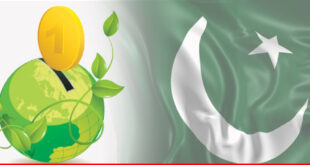The banking sector through CY12 to date has faced tough challenges with external factors including law and order situation, political uncertainty, strikes causing closure of bank branches in distressed areas to name a few. According to the Financial Stability review released by SBP for second half of 2011, 12 banks in Pakistan failed to meet the MCR of PKR 8 billion by December 31, 2011. The minimum capital adequacy ratio (CAR) to be maintained by each bank is 10 percent. The MCR will increase to PKR 10 billion by December 31, 2013 which will be a challenge for banks below the required threshold forcing another round of mergers and acquisitions. The CAR for the banking industry was 15.1 percent in CY11 as compared to 16 percent as on September 2012. ADR for the banking industry was 53.6 percent in CY11 as compared to 52.6 percent as on September 2012. Despite facing the above challenges, banks have done well as a business.
Banks in 2012 were not aggressive with their lending strategy. Large 5 banks preferred maintaining the current portfolio of retail and corporate customers and yield the maximum out of the current portfolio. Smaller banks faced a tougher challenge as asset quality including building a deposit base was the key. Smaller to mid-sized banks were seeking new relationships only on more strict lending criteria. Those who had a genuine need for financing either would find significant delays in the approval process or an approval based on stringent qualifying criteria at higher mark-up rate ranging between 14 percent to 16 percent on home loans, personal loans and automobile leasing.
In order to stimulate the economy and in the wake of declining inflation, SBP reduced the discount rate to encourage private sector credit which otherwise was being invested in Treasury Bills earning a risk free rate of return. The current discount rate is 9.5 percent. Despite reduction in rates, banks are not actively advertising their products and still find comfort in risk free money market investments yielding a return of 9.3 percent approx. With respect to macro indicators, total assets of banks increased from PKR 7,763 billion as on September 11 to PKR 9,109 billion as on September 2012. Deposits increased from PKR 5,769 billion as on September 2011 to PKR 6,744 billion as on September 2012. Profit after tax for the banking sector increased from PKR 76 billion as on September 2011 to 92 billion as on September 2012. Advances increased from PKR 3,263 billion as on September 2011 to PKR 3,549 billion as on September 2012.
Banks due to increasing trend of Non-Performing loans, are vigilant and would even consider declining a case which otherwise would be sound. There were numerous instances trough 2012 where such reasons for refusal become superficial. Consumer loans carry a higher spread compared to corporate loans and is generally driven through booking of clients to ensure that profitability through volumes. With the slowdown experienced in the market, banking NPLs reached PKR 613 Billion as on September 2011 as compared to 617 billion as on September 2012.
Advances in Corporate loans as mentioned above vary from bank to bank in terms of strategy. During 2012, large banks with an existing strong corporate portfolio were not seeking new relationships or marketing new clients. Walk in clients were usually preferred only if financials, projections and the business model showed any viable sense to the bankers. Small to mid-sized banks are still open to new client relationships to grow the banks, however, clients are only being considered who otherwise have good credit history with other banks. Advances through corporate loans increased from PKR 2,345 billion as on September 2012 as compared PKR 5,292 billion as on September 2012.
The bankwise consumer portfolio was recorded to PKR 244.56 billion as on September 2011 compared to PKR 244.72 billion as on September 2012. NPLs in the consumer sector reduced marginally from PKR 45.562 billion as on September 2011 to PKR 44.489 billion as on September 2012 consequently reducing the infection ratio from 18.6 percent to 18.2 percent during the same period under review. Until early 2012, banks were not willing to increase advances keeping with the NPLs and the macro economic situation. With the reduction in the discount rate and increased focus on the recovery of bad loans, banks have well established recovery units assisting banks. It is also said under present circumstances, banks would only offer consumer products to those who ideally do not need any financing options since they are self-sufficient with residual cash at their disposal.
Credit cards is a popular bank product, however, not much activity has taken place through 2012 in this line of business. According to SBP, advances against credit cards were PKR 23.935 Billion in September 2012 as compared to PKR 23.233 Billion in September 2012, infection ratio increasing from 20 percent to 21.3 percent during the same period under review. Credit cards carry the highest mark-up rate ranging between 34 percent to 42 percent.
Mortgage loan advances decreased from PKR 58.694 billion as on September 2011 to PKR 53.672 billion as on September 2012 with infection ratio increasing from 28.3 percent as on September 2011 to 31.6 percent in September 2012. NPLs during the same period increased from PKR 16.62 billion as on September 2011 to PKR 16.943 billion as on September 2012. It is estimated that Pakistan has a shortfall of 9 million housing units considering the population growth expected to increase year on year, mortgage loans will be demanded through the year if only banks are willing to lend at reduced rates through trend of declining interest rate to stimulate the economy.
With the influx of cars and the new decision to allow import of reconditioned cars upto 3 year old cars, passenger car sales in Pakistan from 127,944 vehicles as on June 2011 to 157,325 as on June 2012, an increase of 23 percent compared to previous year however, advances for automotive financing has decreased from PKR 48.383 billion in September 2011 to PKR 44.551 billion in September 2012, infection ratio remaining at 10.7 percent during the period under review.
With increased cost of living due to inflation, a successful product for banks as compared to other consumer banking products are personal loans which have increased in terms of advances from PKR 112.828 billion as on September 2011 to PKR 123.137 billion as on September 2012. Infection ratio in personal loans portfolio for banks reduced from 16.7 percent as on September 2011 to 14.4 percent as on September 2012. Personal loans are obtained for education, weddings, home improvements, purchase of consumer electronics and vehicles to name a few through the usage maybe numerous. Such mid-size loans assist consumers meet short to mid-term financing needs.
Analyzing the overall performance of banking through 2012, advances picked up at a slow pace, primarily after June 2012. Consumer Banking is still on a standstill with overall decline in advances. Corporate lending increased, however, mainly accounting for short term working capital advances. Green Field and long term investments were dissatisfactory through 2012 reducing from USD 1,634 million in FY11 to USD 812 million in FY12. Banks continue to prefer financing government’s deficit through investment in fixed income securities rather than focus more on taking risk and extend private sector credit. Rising trend of NPLs has also been an alarming sign for the banking sector. Through the discount rate was reduced to provide benefit to the consumers, it has been observed that few banks have increased the spread over KIBOR, negating the benefit to consumer and corporate clients intended by SBP through reduction in interest rates. Unfortunately, such practice by banks is counterproductive and will not help increase advances as intended. Banks on the other hand justify increase in spread with pressure on margins. If the spread is pushed higher and advances remain on a statusquo, profitability of banks through interest income will increase, however, NPLs will also increase from current levels which may be precarious keeping with the current economic situation. During 2013, banks would need to focus on long term advances, focus more on export based industries with the need of the economy and increase advances through consumer banking.
 PAGE Blog Business Weekly Magazine
PAGE Blog Business Weekly Magazine

